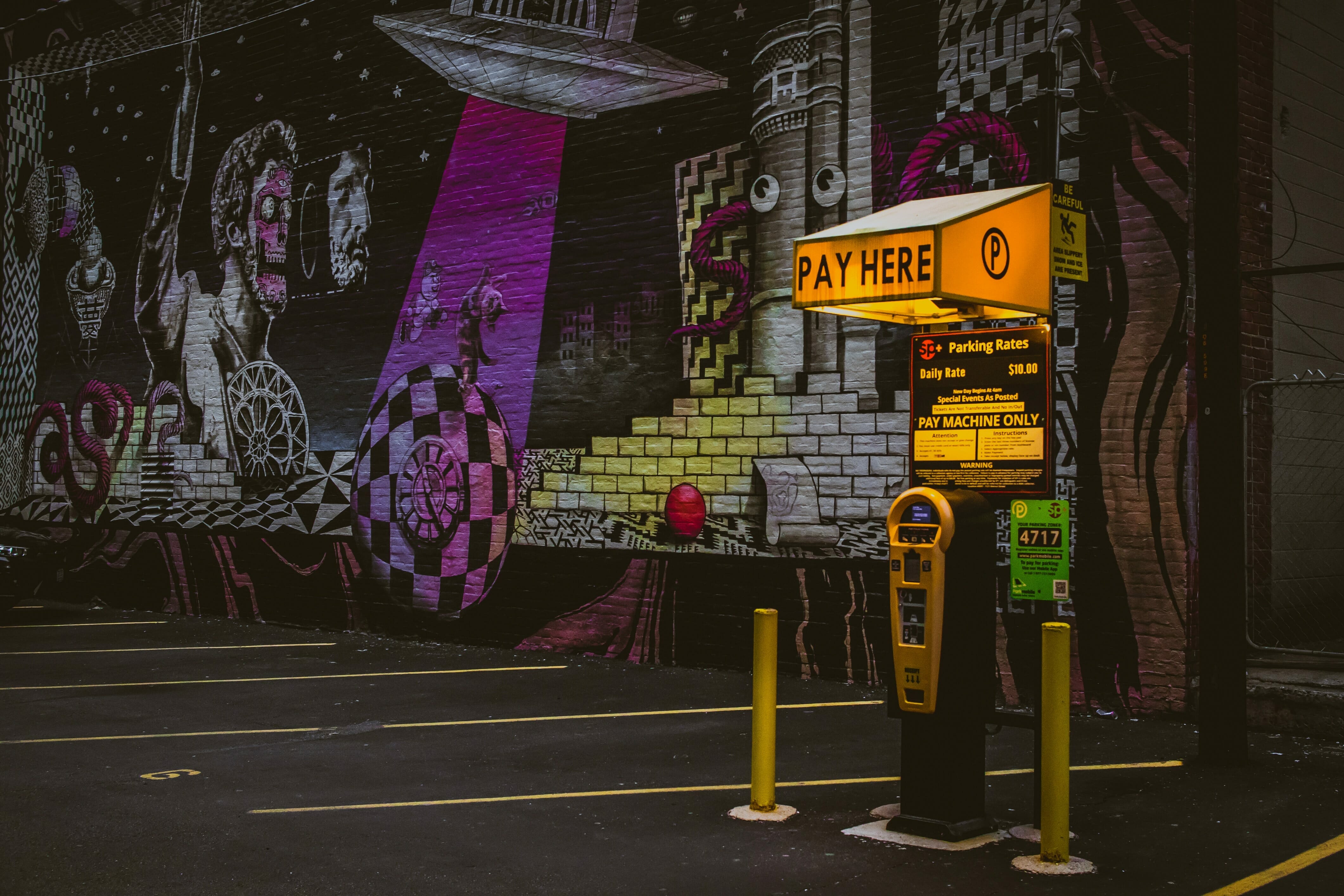I’m sure you’ll agree with me when I say taxes aren’t exactly a day at the beach. At least as a W2 employee, you don’t have to worry about setting money aside to cover yourself come tax time. But your freelance taxes are complicated. Discover how to uncomplicate them below.
Freelance income is a bit different if you’re getting work as a contractor. Kiss those W2s goodbye and say hello to the 1099.
The freelance workforce is growing. In 2018, there were over 56 million freelancers in the U.S. More people are forging an alternative path to earning money through side hustles outside of their day jobs.
Working as a freelancer has its pros and cons. You’re the boss. You set your rates and hours. However, sometimes it’s feast or famine regarding your income.
Oh yeah, you also gotta worry about taxes.
“With great power comes great responsibility.” Benjamin “Uncle Ben” Parker
It makes sense to have a basic understanding of things like self-employment tax, business expenses, and tax deductions.
Freelance income is taxed the same as a W2 only it’s you who is now responsible – not your employer – for making sure you’re not underpaying Uncle Sam.
A light at the end of the tunnel.
What if I told you that it doesn’t have to be difficult. You can set yourself up for success and avoid a massive tax bill by understanding a few basic principles.
A bit of homework will help you avoid getting hit with a huge tax bill. Why?
Because you don’t want to be scrambling to find extra money when filing taxes at the last minute – or worse – charging it to your credit card. I’ve been there.
I’m going to show you a few things to be mindful of when handling your taxes as a freelancer.
![]()
How Much Do Freelancers Get Taxed?
The Self-Employment Tax
If you earn $400 or more as a freelancer, you’re subject to paying the self-employment tax.
You ever look at your pay stubs and wonder just who is FICA and why is he getting all of your money? FICA is the Federal Insurance Contributions Act set up in 1935 and is your contribution to Social Security and Medicare.
Everyone is subject to this tax. It was established as something you pay into throughout your working life to access in retirement. It’s like your present self is taking care of your future self. You and your employer each pay half.
If you’re self-employed you’re still on the hook for this amount, only it’s referred to as the SECA (self-employed contributions act) set up in 1954.
FICA is what you pay the IRS as a W2 employee.
SECA is what you pay the IRS as a self-employed freelancer.
They both pay for the same thing – Social Security and Medicare. The only difference – one is for an employee, and the other is for the freelance contractor.
SECA Explained
The FICA/SECA tax is 15.3%. As a freelancer, you’re on the hook for that percentage. However, because you’re a freelancer, Uncle Sam lets you deduct half that amount. So, you end up only paying 7.65%.
Here’s why…
If you were a W2 employee, your employer would take out 6.2% of your earnings for social security and 1.45% for Medicare. That’s standard. Your employer then matches that exact percentage of 6.2% and 1.45% for a total of 15.3%.
But because you’re self-employed, you have to foot the entire bill.
As a freelancer, taxes are your responsibility.
Tweet ThisJust know that you pay 6.2% to social security, and 1.45% to Medicare and the other half gets deducted.
There’s also a cap.
The Social Security tax cap for 2020 is $137,700. If your earnings soar above this number, you’re not liable for paying the self-employment tax on anything over that amount.
However, Medicare has no income limit. You’re liable for everything you earn. If you’re a single filer making $200,000 or more, you pay an extra 0.9% Medicare tax. If you’re married filing jointly, you’ll pay an additional 0.9% on income over $250,000.

Quarterly Taxes
If you suspect you’ll owe $1,000 or more in taxes, the IRS recommends you make quarterly payments. An easy way to determine this is basing this year’s payments on what you earned last year.
It isn’t an exact science that’s why it’s called estimated quarterly payments. Your income and what you owe in taxes might change from year to year, and that’s fine. If you pay too much throughout the year for your estimates, the IRS will give you a refund. If you underpay, you’ll owe the difference. Why?
Because zero taxes are being withheld from your paycheck. As a self-employed freelancer, your gross pay is not the same as your net pay. You must withhold taxes; otherwise, your tax bill could be enormous.
Paying quarterly taxes is like loaning money to the government that they’ll pay back to you if you overpay. Who doesn’t love a refund?
One way to estimate your quarterly payments is to look at what you paid in taxes and what you earned last year.
For example, last year you earned $55,000 in freelance income and your taxes were $6,500. Divide your taxes paid by earned income so the equation would like this:
6500/55000 = 11.8%
You’d then apply that 11.8% to every dollar earned as a freelancer. One quarter you may receive less while the next quarter you make more. That’s ok as long as you stick to your percentage of 11.8% you’ll be on track.
If you earn $2,000 in quarter one and $3,000 in quarter two you’d multiply 11.8% to figure what you should pay each quarter.
Example:
Quarter one
2000 multiplied by 0.118 = $236
Quarter two
3000 multiplied by 0.118 = $354
You’d pay $236 in quarter one and $354 in quarter two.

This is our guide to budgeting simply and effectively. We walk you through exactly how to use Mint, what your budget should be, and how to monitor your spending automatically.
When Do You Make Quarterly Payments?
The current schedule for paying quarterly taxes is as follows:
- April 15 for income earned between January 1st and March 31st.
- June 15 for income earned between April 1st and May 31st.
- September 15 for income earned between June 1st and August 31st.
- January 15 for income earned between September 1st and December 31st.
Another way to think about what you’re subject to paying in taxes is to multiply your earned income by 92.35%. Why?
Because 92.35% is what you get when you subtract the government’s share (7.65%) of the self-employment tax. Remember when I said Uncle Sam lets you deduct half of that 15.3% tax?
So, if you earned $2,000 in freelance income, you’d multiply 2,000 by 0.9235 which equals $1847 you’re on the hook for.
Or, you could go the easy way and take 30% out of every freelance paycheck you get.
Earned a $5,000 check from freelance work? Multiply 5000 by .3, and you get 1500. That’s what you’d set aside to pay in taxes. Again, this is another easy calculation you can make to save yourself the time of numbers crunching.
Some folks like Dave Ramsey suggest taking out as much as 35% – 40% to be safe. If you live in a state with a high cost of living and higher taxes like New York, this might make more sense.
How Much Should You Set Aside for 1099 Freelance Taxes
Your tax situation will vary depending on which state you live in. Here are some things to factor in when setting aside money for tax season:
- Federal income tax
- State/city tax. For example, I live in California, and they have a state tax and a disability insurance tax known as SDI. The SDI tax is 1%. Knowing that information lets me accurately withhold taxes on paychecks received from clients, and I won’t underpay come tax time.
- Social Security
- Medicare
The burden of funding your retirement accounts, HSAs, and health insurance also falls on you because you’re not an employee at a business. Usually, you’d pay into those accounts through your employer.
Although these things aren’t required when doing your taxes – Uncle Sam won’t penalize you for not having a retirement account – you should consider funding these yourself.
This is a very basic, fundamental practice for any business – and you are a business. – Vicki Robin, Your Money or Your Life
If you’re not in and out of the doctor’s office, get health insurance with a high deductible and low, monthly premiums. Set up a health savings account (HSA) to fund your doctor bills. Open a SEP IRA or Solo 401(k) and start contributing to your retirement.

Which Tax Forms Will You Need
Anytime you’re doing freelance contracted work for someone else you’ll be issued a 1099 MISC form from your client. Typically they’ll send one to you and one to the IRS.
However, your clients aren’t required to send you one if you earned less than $600 from them during the year. But still, declare those earnings to be on the safe side if it’s over $400 (if you earn $400 or more you’re required to pay the self-employment tax).
Always declare everything with freelance taxes. Be completely transparent. You’ll sidestep any sticky situations with the IRS.
These days you may also receive a 1099-K. This is payment received from a third party like PayPal, Amazon, or Venmo. It’s another way to track your earnings. If you don’t receive a 1099-K, you’re still responsible for that earned income.
Clients aren’t required to send you a 1099-K unless they pay you at least $20,000 or pay you 200 times. Electronic payments and direct deposits have never been more manageable with the latest technologies available.
Digital Tools
Speaking of accounting, take a look at Turbo Tax Self-Employed if you’re going the DIY digital route.
If you’re looking for ways to track your expenses, apps like Bonsai, SageOne, and Cushion may save you from future headaches.
Forms to be mindful of:
- Form 1040 ES – for your federal estimates
- Form 1099 MISC & Form 1099 K – for work completed with your clients
- Schedule C – your tax foundation when filing all things.
- EFTPS – electronic federal tax payment system for estimated quarterly payments.
Deductions
The IRS says you can deduct expenses that are “ordinary and necessary in your industry.” For example, if you’re an actor, you could write off a percentage of your acting classes as a business expense but probably not if you’re a plumber.
Some deductions you can take while working for yourself:
- Travel
- Business meals
- Advertising and marketing
- Office supplies
- Utilities
- Home office
- Educational expenses/training
Ever hear of the qualified business deduction(QBI)? It lets you deduct 20% of your profits without having to itemize your deductions. Your taxable income gets reduced, lowering your taxable income.
See if you qualify for the Earned Income Tax Credit (EITC). It’s a tax credit for low to moderate-income earners.
Other Useful Freelance Tax Tips
If you hold both W2 and 1099 jobs, lowering your withdrawals to 1 or 0 on your W2s will have more taxes taken out of your paychecks. It’ll reduce your estimated quarterlies.
Another idea (though not exact by any means) is to look at your pay stubs from your W2 paychecks and look at all of the taxes withheld from that check. They should be itemized. You can get a rough estimate of the percentage in taxes withheld based on your net pay.
For example, if your W2 your gross pay was $250, but $45 in taxes were withheld, you’d divide $45 by $250 (45/250 = 18%).
18% in taxes were withheld from your paycheck. That percentage can serve as a baseline for understanding how much is withheld. Thinking in terms of percentages gives you greater insight into the value of every dollar.
If you wanna go deeper, check out Publication 15: “Employer’s Tax Guide” on the IRS website. Look at the chapter titled Withholding From Employees’ Wages.
It goes into great detail explaining how employers withhold money from your checks. This can help you as a freelancer when considering how much to withhold each paycheck.
I have a savings account called “1099 Fund” and funnel a portion of every check received as a freelancer into this account. That money is set aside for quarterlies and tax season.

Freelance Taxes: Final Thoughts
Don’t live in fear of tax returns. If you’re feeling overwhelmed and don’t want to do it yourself – even on a platform like TurboTax – seek out a certified public accountant (CPA).
CPAs must pass a rigorous exam issued by one of the 50 states (depends on what state you’re practicing in) and continuously renew their license through self-education. As our friend Robert Kiyosaki aptly put it:
That is why he paid so much for smart tax accountants. It was less expensive to pay them then to pay the government. He knew the law because he was a law-abiding citizen and because it was expensive to not know the law.
The importance of finding an accountant who knows and understands your inner business workings will save you money.



